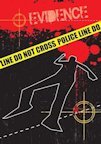I don’t usually applaud anything that the quack physician, Timothy Wheeler, posts on his Doctors for Reponsible Gun Ownership website, but he’s done us all a favor today by digging up a remarkable article that was originally published in 1980 by Lester Adelson, who served for many years as the Deputy Coroner of Cuyahoga County. In case you don’t know it, Cuyahoga is a.k.a. Cleveland, which means that Dr. Adelson knew a lot about gun violence. I’ll ignore the usual stupidities of Wheeler and get right to what Adelson said, because thirty-five years after the fact much of what Adelson observed then remains relevant today.
Adelson confronts us first not with the issues of mortality and morbidity from guns, but with a much more profound problem, namely, the quality of life experienced by those who survive a gunshot wound. He notes that an increasing number of gun-violence victims survive the assault, which is even more true today than it was thirty years ago. But he then raises the post-trauma quality of life issue of which we know very little. Adelson mentions in passing that survivors of gun violence have shortened lives, but he offers no data and I can’t recall a single study which sheds information on this fact. He also talks about post-incident psychological trauma, again an acknowledged result of being at the wrong end of the barrel when a gun goes off, but we lack specific data to better understand this issue as well.
 Think about this: there may be more than 1.5 million of us alive today who at some point endured the pain, suffering and physical/psychological damage caused by a bullet puncturing and exiting our bodies or remaining inside. What kind of lives do these folks lead after they are discharged from the hospital and told that everything’s “o.k.?” Can they go back to work? Will they live out a normal life-span or expire at an earlier age? We keep very good records on cancer patients in order to determine whether the treatment they received kept their cancers in remission or resulted in reappearance of the “emperor of all maladies.” But the survivors of gunshot wounds, unless they come back to the hospital with another gunshot wound, are largely on their own.
Think about this: there may be more than 1.5 million of us alive today who at some point endured the pain, suffering and physical/psychological damage caused by a bullet puncturing and exiting our bodies or remaining inside. What kind of lives do these folks lead after they are discharged from the hospital and told that everything’s “o.k.?” Can they go back to work? Will they live out a normal life-span or expire at an earlier age? We keep very good records on cancer patients in order to determine whether the treatment they received kept their cancers in remission or resulted in reappearance of the “emperor of all maladies.” But the survivors of gunshot wounds, unless they come back to the hospital with another gunshot wound, are largely on their own.
Two other points from Adelson’s article deserve mention. First, he confronts the degree to which we are immune to the issue of gun violence, noting that if Cuyahoga County experienced as many deaths each year from typhoid fever as they did from guns, there would be “mass hysteria.” And Adelson wrote this article in 1980, well before shooting deaths in Cleveland and other major cities peaked in the 1990’s. But this comment struck a chord because I recall that we started rushing medical supplies to Central Africa to ward off Ebola which, if it killed the same number of people in a year who are killed by gunshots in America (roughly 30,000), would have been considered an epidemic by the WHO.
The second, and perhaps more important point raised by Dr. Adelson is the recognition that gun homicides and crimes aren’t the same thing. The idea that gun violence and crime are synonymous has been a convenient way for the pro-gun folks to distinguish between ‘law-abiding’ gun owners who shouldn’t have their guns regulated, as opposed to criminals who do the bad things with guns and just need to be locked away. Adelson cuts right through this nonsense when he says, “The accessibility of a firearm permits the instantaneous metamorphosis of a law-abiding (hot-headed?) person into a murderer,” citing data which shows that most homicides are not associated with other felonies and often erupt in the context of a domestic dispute.
Adelson’s brilliant and prescient article underscores one thing that is true beyond a shadow of a doubt: guns are very, very lethal and no matter what an idiot like Tim Wheeler says, putting one into someone’s hands creates medical risk. That’s not just a problem for gun owners per se, it’s an issue that physicians always need to address.
Recent Comments